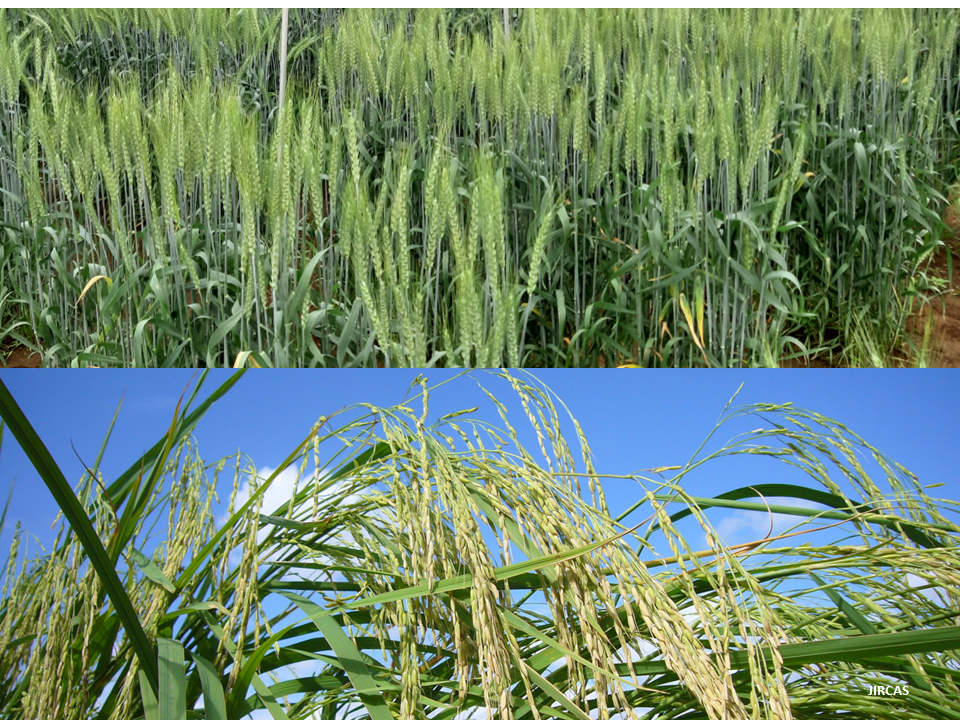Pick Up
1197. Mitigating the Environmental Impact of Innovations to Improve Crop Productivity

1197. Mitigating the Environmental Impact of Innovations to Improve Crop Productivity
Innovations in crop breeding by domestic and international agricultural research institutes have contributed greatly to increasing the yield of staple crops in developing countries. Innovations in crop production are primarily aimed at food security and increasing rural incomes, but they also have a significant impact on the environment.
Since the mid-20th century, the rise in global population and per capita income has increased the demand for agricultural products, placing unprecedented strain on the Earth system. Agriculture currently occupies about 37% of the world's land area and is responsible for about one-quarter of the world's anthropogenic greenhouse gas emissions. Agricultural expansion to meet growing demand is one of the main drivers of land use change (LUC) and natural habitat loss. Over the past two decades, a large proportion of tropical deforestation has been attributed to agricultural land conversion. More broadly, agricultural expansion can be attributed to a large proportion of the world's net carbon emissions from land use and land cover change since 1850. Changes in agricultural land area also have important effects on biodiversity.
Productivity increases offset the pressure to expand agricultural land area while meeting growing market demands. In the early 20th century, crop yield growth accelerated in many of today's developed countries. In some developing countries, crop yields increased significantly with the beginning of the "Green Revolution" in the 1960s. Concerns over population growth and the growing scarcity of land and water resources in developing countries led donor countries and organizations to establish a series of international agricultural research centers in the 1960s to address food crop production constraints in developing countries. These centers still operate today as the Consultative Group on International Agricultural Research (CGIAR). Working with national research institutes, the CGIAR centers have produced a series of improved crop varieties, first for wheat and rice, and then for other food crops, such as coarse grains, root crops, and legumes. Low- and middle-income countries have also increased investments in agricultural research and development, with their governments more than tripling their annual spending since 1981. Between 2016 and 2020, improved varieties of food crops developed from national, CGIAR, and private sector research programs were introduced to at least 440 million hectares in developing countries, about two-thirds of the total area planted to these crops. A study published in the journal PNAS showed that sustained productivity gains from improved crops between 1961 and 2015 could have limited the expansion of cultivated land, reduced greenhouse gas (GHG) emissions from land use, and saved thousands of threatened plant and animal species.
CGIAR centers have played a particularly important role in driving the Green Revolution in developing countries through high-yielding varieties of wheat and rice, especially in Asia and Latin America. Although initially established to address global food security, donor interest in funding CGIAR has expanded to address natural resource conservation and other challenges. Over the past few decades, the diffusion of CGIAR-related crop innovations has also begun to shift geographically, becoming increasingly important in Africa, while in many other regions they have been gradually replaced by national programs and private sector varieties.
Reference
Uris Lantz C. Baldos et al, Adoption of improved crop varieties limited biodiversity losses, terrestrial carbon emissions, and cropland expansion in the tropics, Proceedings of the National Academy of Sciences (2025). https://www.pnas.org/doi/10.1073/pnas.2404839122
Contributor: IIYAMA Miyuki, Information Program
